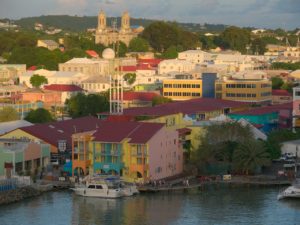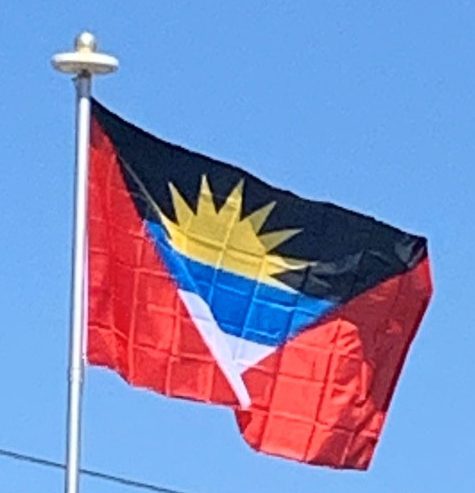Below the Portuguese were the Middle Easterners, who began migrating to Antigua and Barbuda around the turn of the 20th century. Starting as itinerant traders, they soon worked their way into the middle strata of the society. Although Middle Easterners came from a variety of areas in the Middle East, as a group they are usually referred to as Syrians.
The Irish were first sent to the island as indentured and unpaid servants by Oliver Cromwell during the early to mid-17th century. They were treated harshly and had to live in depraved conditions. Many of Irish died from severe sunstroke and sickness and those who survived lived in extreme poverty. Irish Indentured servant were replaced by African slaves in the mid to late 17th century as they were more suited to working in the sun and heat. The Irish were used by the British as a buffer group between them and the African slaves and became overseers on sugar plantations on the island. Many of the Irish had children with the Africans, which is why many Antiguans and Barbudans have Irish surnames to this day.
Sixth and finally were the African-Antiguans and Barbudans who were located at the bottom of this hierarchy. Enslaved and forcefully transported, Africans started arriving in Antigua and Barbuda in large numbers during the 1670s. Very quickly they came to constitute the majority of the population. As they entered this hierarchy, Africans were profoundly racialized. They ceased being Ashanti, Ewe, Yoruba and became Negroes or blacks. In the 20th century, the colonial hierarchy gradually began to come apart as a result of universal education and better economic opportunity. This process gave rise to Africans reaching the highest strata of society and government.
Independent Antigua and Barbuda (1981–present):
The islands achieved independence from the United Kingdom in 1981, becoming the nation of Antigua and Barbuda. However, it remains part of the Commonwealth of Nations, and remains a constitutional monarchy, with Queen Elizabeth II as Queen of Antigua and Barbuda.

In 1997, Prime Minister Lester Bird announced that a group of ecologically sensitive islands just off Antigua’s northeastern coast, previously proposed for national park status, were being turned over to Malaysian developers. The Guiana Island Development Project deal, calling for a 1000-room hotel, an 18-hole golf course and a world-class casino, sparked widespread criticism by environmentalists, minority members in parliament and the press. The issue came to a head when a local resident shot the PM’s brother. Today, the proposed development is mired in lawsuits and politics.
The ALP won renewed mandates in the general elections in 1984 and 1989. In the 1989 elections, the ruling ALP won all but two of the 17 seats. During elections in March 1994, power passed from Vere Bird to his son, Lester Bird, but remained within the ALP which won 11 of the 17 parliamentary seats. The United Progressive Party won the 2004 elections and Baldwin Spencer became Prime Minister, removing from power the longest-serving elected government in the Caribbean. In 2014 the Antigua and Barbuda Labour Party regained power from a massive win with the leader being the “World Boss”, Gaston A. Browne. A snap election was called 3 years later, and the Antigua and Barbuda Labour Party led by the incumbent leader Hon. Gaston Browne dominated the elections with a landslide victory of 15-1-1.
Geography:
Antigua and Barbuda both are generally low-lying islands whose terrain has been influenced more by limestone formations than volcanic activity. The highest point on Antigua is Mount Obama (formerly Boggy Peak), the remnant of a volcanic crater rising 1,319 feet.
